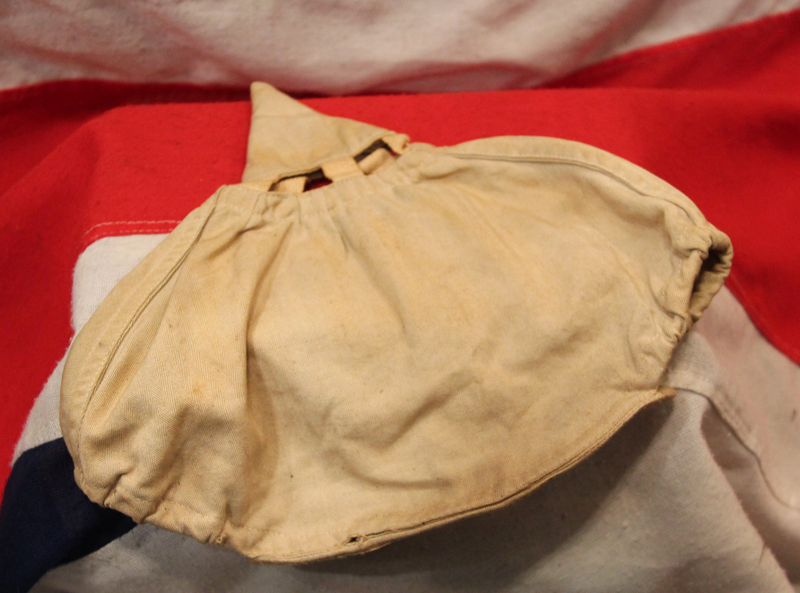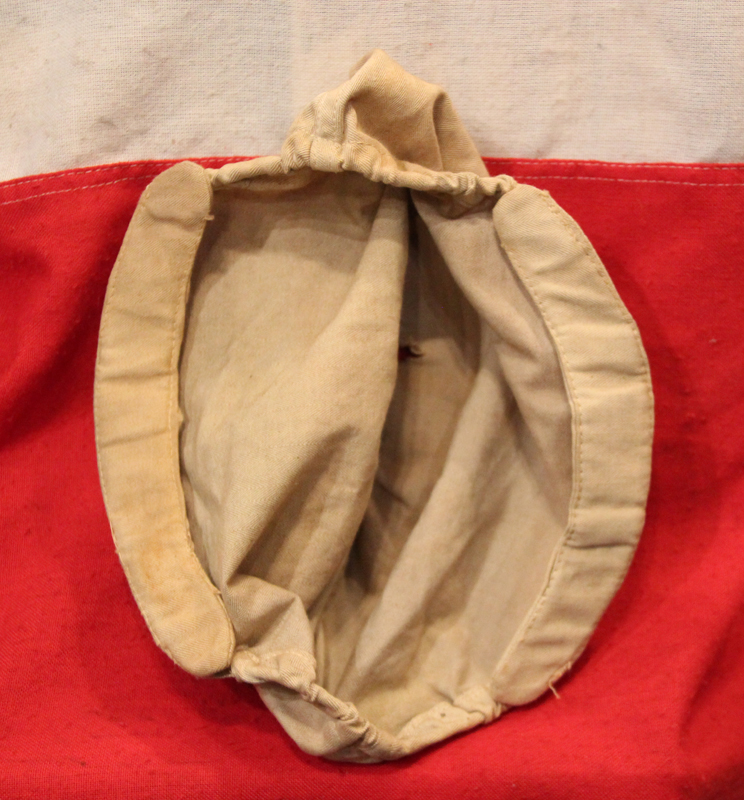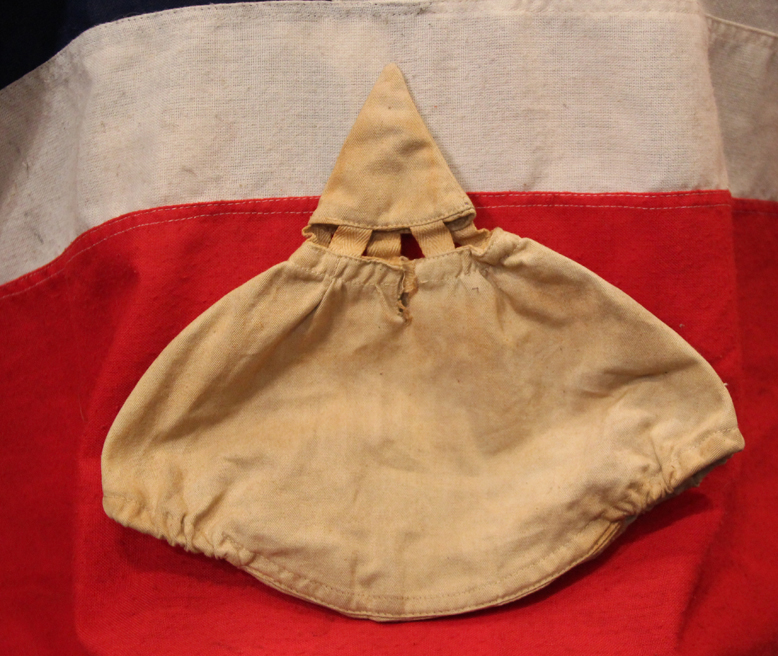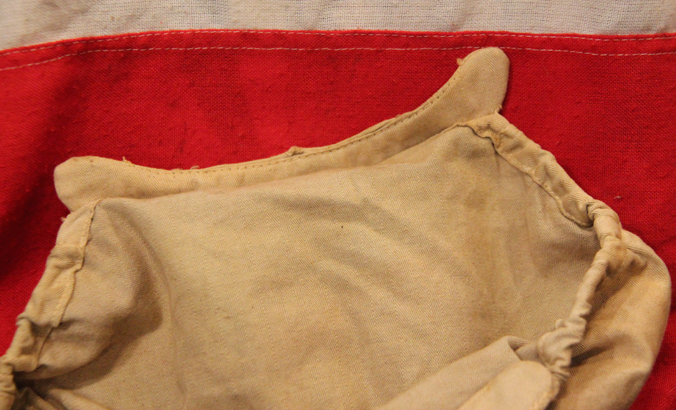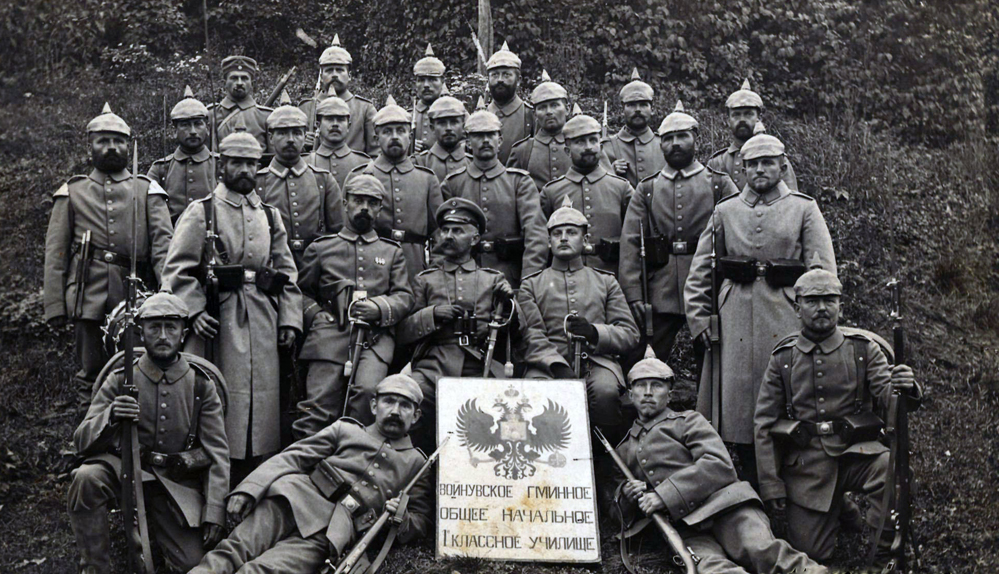A Scarce Original Imperial German WW1, Elite 'Guards' Regiment Pickelhaub Helmet Cover, In Khaki. An Ideal Addition For a Collector of The Rare Forms of Guards Infantry Pickelhaub
Imperial Prussian guards issue. Photo in the gallery of Imperial German troops wearing covers on their pickelhaubs, with a captured Russian sign. In 1892, a light brown cloth helmet cover, the M1892 uberzug, became standard issue for all Pickelhauben for manoeuvres and active service. The uberzug was intended to protect the helmet from dirt and reduce its combat visibility, as the brass and silver fittings on the Pickelhaube proved to be highly reflective. Regimental numbers were sewn or stencilled in red (green from August 1914) onto the front of the cover, other than in units of the Prussian Guards, which never carried regimental numbers or other adornments on the uberzug. In October 1916 the colour was changed to be feldgrau (field grey), although by that date the plain metal Stahlhelm was standard issue for most troops. All helmets produced for the infantry before and during 1914 were made of leather. As the war progressed, Germany's leather stockpiles dwindled. After extensive imports from South America, particularly Argentina, the German government began producing ersatz Pickelhauben made of other materials. In 1915, some Pickelhauben began to be made from thin sheet steel. However, the German high command needed to produce an even greater number of helmets, leading to the usage of pressurised felt and even paper to construct Pickelhauben. The Pickelhaube was discontinued in 1916.
During the early months of World War I, it was soon discovered that the Pickelhaube did not measure up to the demanding conditions of trench warfare. The leather helmets offered little protection against shell fragments and shrapnel and the conspicuous spike made its wearer a target. These shortcomings, combined with material shortages, led to the introduction of the simplified model 1915 helmet described above, with a detachable spike. In September 1915 it was ordered that the new helmets were to be worn without spikes when in the front line
Code: 21970
395.00 GBP


